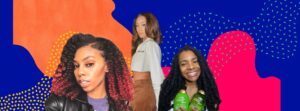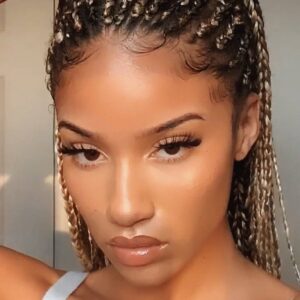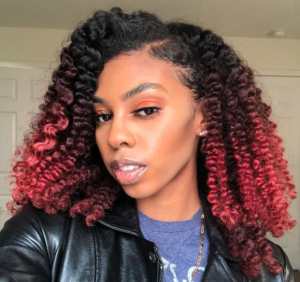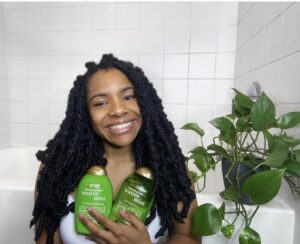
Some will argue that Black people are the blueprint. They’ve paved the way for fashion, technology, makeup, food and more. But in the age of influencers and content creators, Black creators are still getting the short end of the stick or no recognition at all.
Kai Foster is an influencer and content creator for YouTube and Instagram. She started creating content in high school to eventually become what she calls a “Howard YouTuber.”
Foster has gained a following of 258k subscribers and 29.4k followers with her lifestyle, transparent vlogs.
“I think not until recently I truly stepped into my self confidence when negotiating with brands, and it can be very difficult knowing how much you’re worth,” Foster said in a Zoom interview with The Famuan.
As the years with the need for social media continued, the role of influencers and content creators became an official occupation. Some of the early Black influencers include Amiyah Scott, Bria Myles, Keyshia Ka’oir, Jayda Cheaves and Jackie Aina.
“Being an influencer and content creator is a new profession, so we kinda don’t know what we’re doing either,“ Foster added.
Paid ads, sponsorships and brand partnerships became a craze in 2015 when the interest in influencer marketing doubled, according to Social Media Today. Instagram quickly picked up on the growth trend and began to shift algorithms and help make the app more suitable for influencers and business alike.
But similar to other industries, racism began to leak into Instagram aesthetics, which is the main component of influencing and content creation. Black creators were luckily able to lean on talent managers and agencies to assist in their brand deals and negations.

Nydiah Soto, another Instagram influencer and Savage X Fenty ambassador, gained momentum by being consistent with her content. She mentioned that her management has helped her get the recognition and pay she deserves.
“It’s really crazy. It took me to get under management to get the money I deserve with brand deals. It was definitely harder in the beginning as a smaller influencer,” Soto said in a telephone interview.
Foster also explained how gaining a manager helped her book brand deals.
“So when I talked to my manager about my rates and the things that I was being paid for, she told me that it’s terrible, and I should be paid way more than what these brands are offering,” Foster said.
Influencer marketing is said to be traced back to the ancient Romans when gladiators endorsed products. The term influencer used to mean when “someone or something has the power to alter the beliefs of individuals, and as a result impact the course of events,” according to Dictionary.com.
While many macro and micro influencers turned to management for help, some creators stay true to themselves and their prices.

London Green, is a hair influencer and student at North Carolina A&T University. Green has also collaborated with about 20 brands, including Suave and Africa’s Best, after she started her influencer journey with a post of her hair on Instagram.
“Companies should reach out to Black creators the same way they do with others,” Green said. “Not lowball us with money—or lowball us period. Keep us on the same high pedestal that they have for other creators.”
Green hasn’t personally ran into any issues negotiating with brands, but she said she’s witnessed other influencers that could be considered to be on the same level, but because of their skin tone, they were treated differently. But Green said she stands firm on her prices and rates when communicating with different brands.
“I just let them know, this is my price, this is what I’m worth. They come back and either agree, or I don’t hear back from them.
Colorism is another trickle down factor of racism when companies work with Black creators.
Ashley Rodgers is a junior at FAMU that is the current Impressions of Beauty coordinator for the university. Rodgers explained how she’s personally witnessed Black creators being left out.
“I myself have witnessed some of my favorite Black creators work blow up, but receive no recognition for the hard work they put out,” Rodgers said.
White and non-Black creators began to hijack Black trends, fashion and hair styles. This left Black creators with no credit or pay for content they create effortlessly.

Foster also explained that she knows colorism affects which creators are chosen for brand deals.
“I kinda have a little bit of an advantage compared to my dark-skinned counterparts doing YouTube videos,” Foster said. “And I even see mixed girls getting a lot more deals and high quality deals that I would.”
This plays a major role in how brands choose who they work with and shuts Black creators out, only to welcome those who participate in “Blackfishing” and cultural appropriation.
Soto and Foster both explained that the companies and brands began to be more considerate and inclusive when the Black Lives Matter movement gained momentum last year.
“I think that I got more considerate and more professional communications from brands last year when the Black Lives Matter movement was happening and a lot more companies were lenient with me,” Foster said.
Soto said companies only uplift Black creators at their convenience like during Black Lives Matter or Black History month.
“I was like, ‘Let me do some research’ because these companies don’t care. They don’t care at all and they use us as a pawn,” Soto said.
Soto has worked with tons of brands including Fenty Beauty, Curology and Miyi Hair. Soto only had about 100,000 followers around this time last year. Today, she has doubled that and more with 249,000 followers.
With apps like Tik Tok, Instagram and YouTube constantly growing, more influencers are able to be more aware of how and which companies to book deals with.
Influencer Pay Gap is an Instagram account created by Adesuwa Ajayi, a talent manager for influencers. The account allows influencers to anonymously talk about their detailed interactions with brands including pay, engagement rate, how they are chosen based on race and their base rate.
Soto says the best thing creators can do right now is to be consistent.
“When I tell you consistency is key. You better abuse every little feature they have. I’m talking reels, stories, highlights, hashtags, everything,” Soto said.
Influencers like Kai Foster, Nydiah Soto and London Green just want their followers and micro-influencers to stay true to themselves and know their worth.